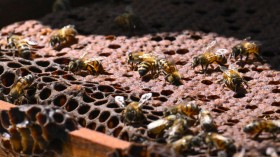A team from the University of Leicester and British Museum has reportedly found evidence of religious dialogue between the Native Americans and the Europeans. On the remote island of Mona, Caribbean, an uninhabited cave features Latin inscriptions along with Christograms. This 16th century Christian symbols would help scientists understand the origins of America's cultural identity.
Beginning 2013, the team of researchers has been exploring Monda Island, found 40 miles west of Puerto Rico. Around 70 cave systems have been explored. One area has caught quite the attention of researchers due to the 16th-century European markings which included Christograms, Spanish and Latin quotes from the Bible.
Cave number 18 reportedly has around 250 markings made on the ceilings and walls. These markings were made through the method called "finger fluting," which is a method used by indigenous people. Drawings were made using one or several fingers. One chamber in the cave also features two representations of the Calvary, which is comprised of three crosses. On the central cross, the word "Jesus" in Latin was written below it.
"What we are seeing in this Caribbean cave is something different. This is not zealous missionaries coming with their burning crosses, they are people engaging with a new spiritual realm and we get individual responses in the cave and it is not automatically erasure, it is engagement," stated Jago Cooper, a curator from the British Museum. Cooper along with Alice Samson of the University of Leicester had led the research team.
In a report by FOX News, a few quotes on the walls include "God made many things," "may God forgive you," and "And the Word was made flesh [and dwelt among us]".
"This research reveals a new perspective on the personal encounter between indigenous populations and the first generations of Europeans in the Americas," stated Cooper in a statement, adding, "This is a unique site that helps us to understand the origins of cultural identity in the Americas, the start of a process that continues right up to the modern day."
© 2024 NatureWorldNews.com All rights reserved. Do not reproduce without permission.





